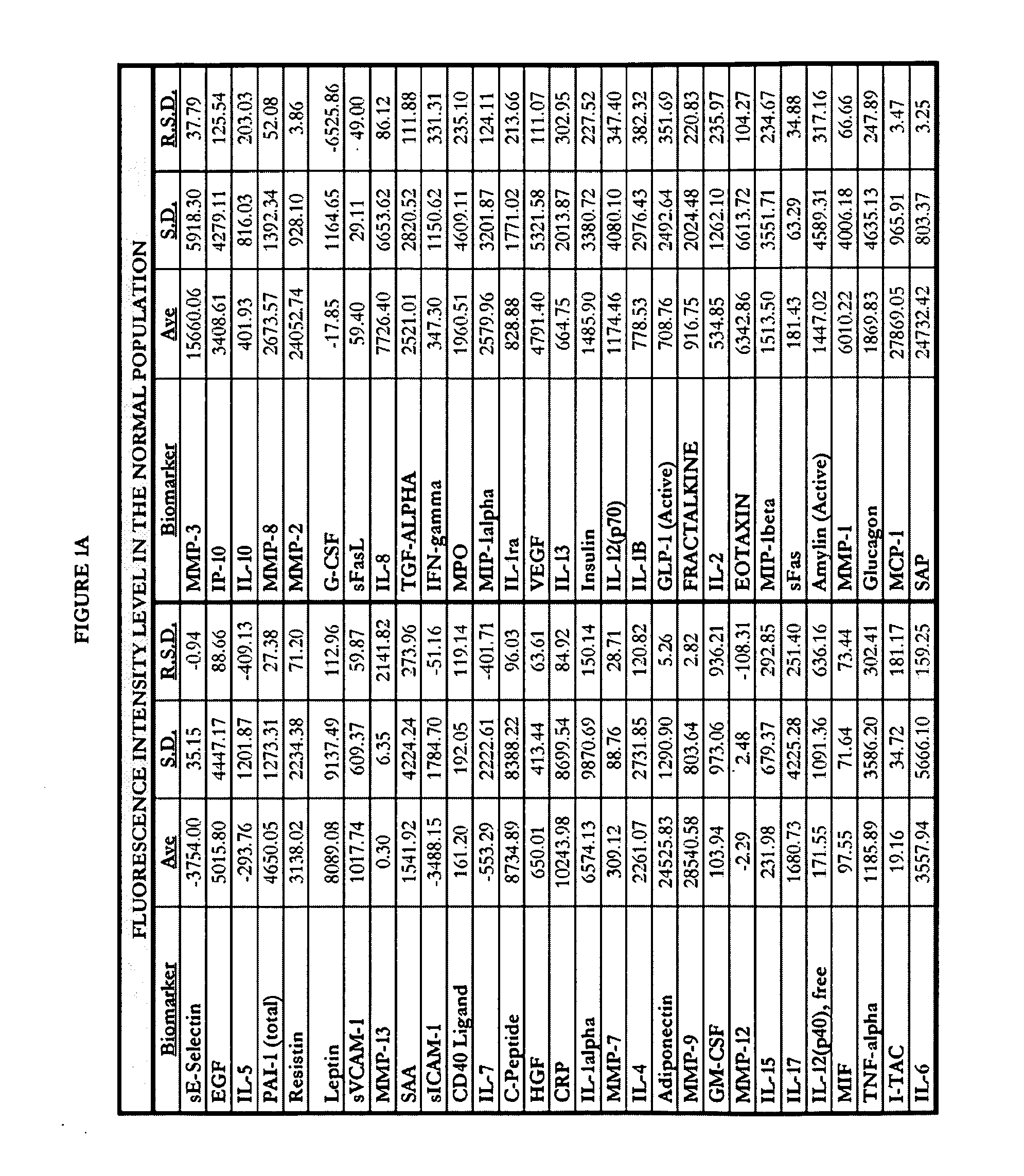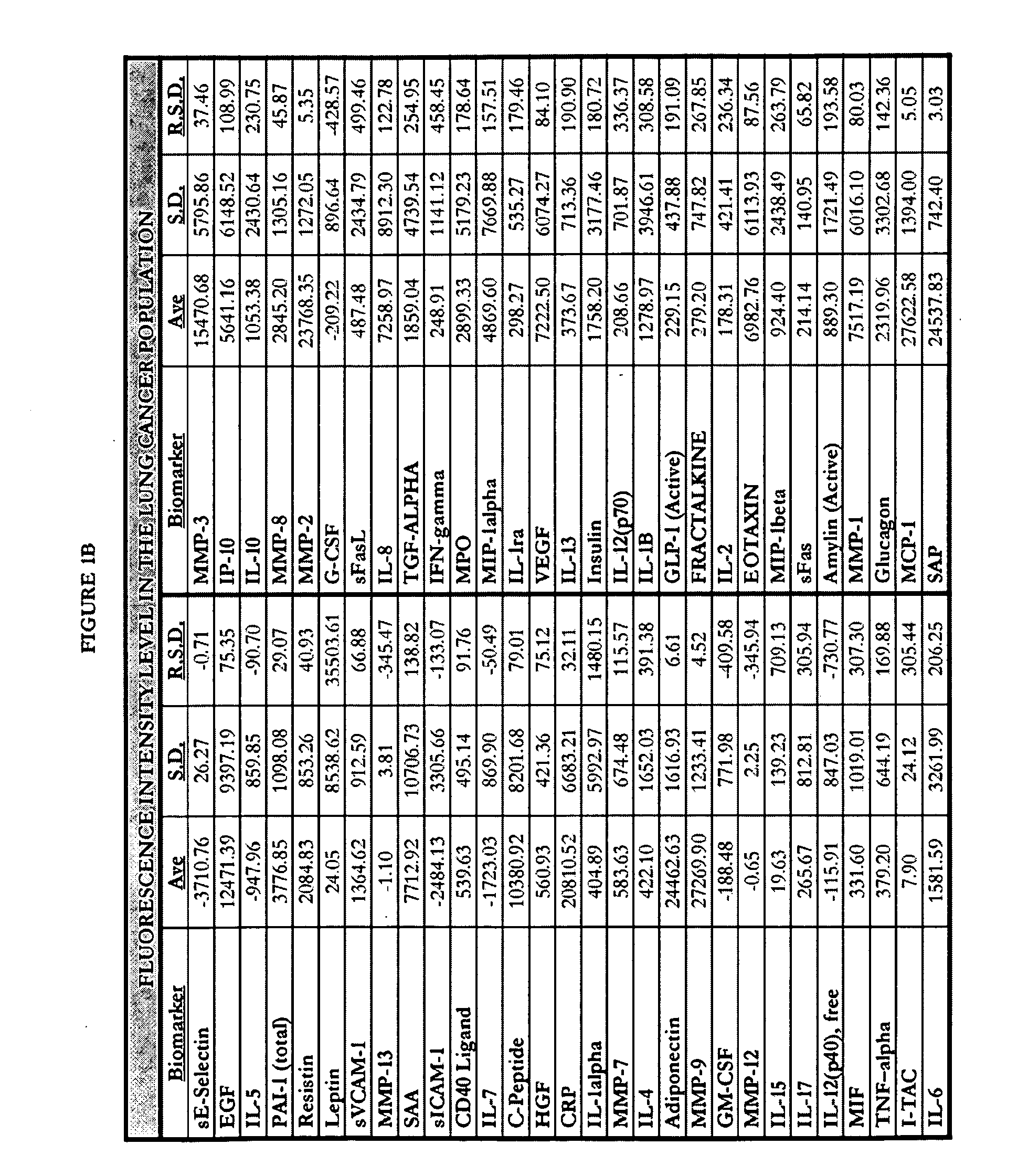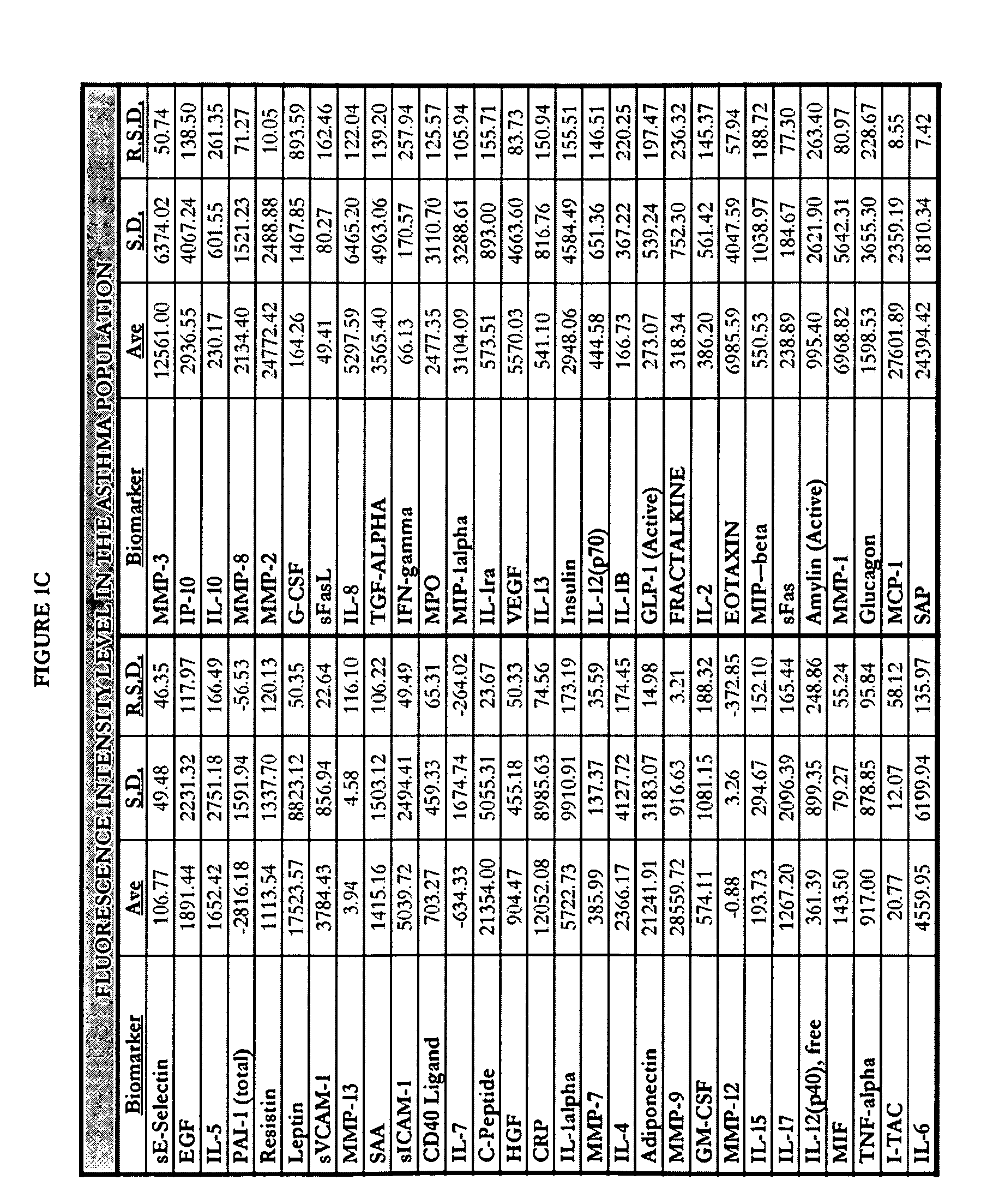Methods of identification, assessment, prevention and therapy of lung diseases and kits thereof
a lung disease and kit technology, applied in the field of lung disease detection, identification, assessment, prevention, diagnosis and treatment, can solve the problems of low survival rate of lung cancer patients, difficult diagnosis early of lung cancer, and current methods of detecting asthma are typically restricted, so as to achieve the effect of differentiating the likelihood and the likelihood
- Summary
- Abstract
- Description
- Claims
- Application Information
AI Technical Summary
Benefits of technology
Problems solved by technology
Method used
Image
Examples
example 1
[0297]Human blood samples were collected from volunteers. Thirty samples were collected from individuals not known to have either non-small cell lung cancer or asthma. These thirty samples comprise, and are referred to herein as, the “normal population.” Twenty-eight blood samples were collected from individuals known to have asthma and diagnosed as such by a physician. These twenty-eight samples comprise, and are referred to herein as, the “asthma population.” Thirty blood samples were collected from individuals known to have non-small cell lung cancers and diagnosed as such by a physician. These thirty samples comprise, and are referred to herein as the “lung cancer population.”
[0298]Research was performed to select biomarkers for which it was believed that altered expression levels would be associated with lung cancer or asthma. As used herein, “lung cancer” is meant to encompass those lung cancers which are known to be non-small celled lung cancers. The following fifty-nine biom...
example 2
[0311]Human blood samples were collected from volunteers. One hundred forty-two samples were collected from individuals not known to have either non-small cell lung cancer or asthma. These samples comprise, and are referred to herein as, the “normal population.” One hundred eight blood samples were collected from individuals known to have asthma and diagnosed as such by a physician. These samples comprise, and are referred to herein as, the “asthma population.” One hundred forty-six blood samples were collected from individuals known to have non-small cell lung cancers and diagnosed as such by a physician. These comprise, and are referred to herein as the “lung cancer population.”
[0312]The same methods described in Example 1 were performed. FIGS. 2A-2E show the results obtained. These results provide guidance for selecting suitable biomarkers for the methods of this invention. In particular, the probability values for particular markers are useful in this regard.
[0313]FIG. 2E shows ...
example 3
[0314]Human blood samples were collected from volunteers. Two hundred eighty eight samples were collected from individuals not known to have either non-small cell lung cancer or asthma. These samples comprise, and are referred to herein as, the “normal population.” One hundred eighty blood samples were collected from individuals known to have asthma and diagnosed as such by a physician. These samples comprise, and are referred to herein as, the “asthma population.” Three hundred sixty blood samples were collected from individuals known to have non-small cell lung cancers and diagnosed as such by a physician. These comprise, and are referred to herein as the “lung cancer population.”
[0315]The same methods described in Example 1 were performed. A Panomics' Procarta Cytokine kit (Cat# PC1017) was also used. Antibodies for PAI-1 and Leptin were used from two different kits. Antibodies for PAI-1A and Leptin1 were produced by Millipore. Antibodies for PAI-1B were produced by Panomics. FIG...
PUM
| Property | Measurement | Unit |
|---|---|---|
| Computed Tomography | aaaaa | aaaaa |
| CT | aaaaa | aaaaa |
| fluorescence intensity | aaaaa | aaaaa |
Abstract
Description
Claims
Application Information
 Login to View More
Login to View More - R&D
- Intellectual Property
- Life Sciences
- Materials
- Tech Scout
- Unparalleled Data Quality
- Higher Quality Content
- 60% Fewer Hallucinations
Browse by: Latest US Patents, China's latest patents, Technical Efficacy Thesaurus, Application Domain, Technology Topic, Popular Technical Reports.
© 2025 PatSnap. All rights reserved.Legal|Privacy policy|Modern Slavery Act Transparency Statement|Sitemap|About US| Contact US: help@patsnap.com



